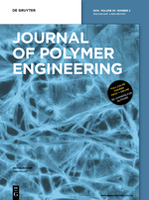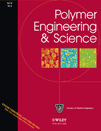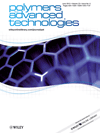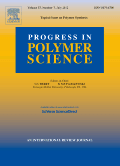
JOURNAL OF POLYMER ENGINEERING
Scope & Guideline
Connecting Ideas for a Sustainable Polymer Future.
Introduction
Aims and Scopes
- Polymer Synthesis and Modification:
Research on the development of new polymer materials and the modification of existing polymers to enhance their properties, including biodegradability, thermal stability, and mechanical strength. - Characterization and Modeling of Polymer Properties:
Studies that involve advanced characterization techniques to understand the physical, chemical, and mechanical properties of polymers, often supported by theoretical and numerical modeling. - Biopolymers and Green Chemistry:
Exploration of sustainable and biodegradable polymers derived from natural resources, including their synthesis, properties, and applications in reducing environmental impact. - Nanocomposites and Hybrid Materials:
Investigations into the integration of nanoparticles and other fillers into polymer matrices to enhance performance characteristics such as strength, conductivity, and thermal stability. - Polymer Processing Technologies:
Research focusing on innovative processing techniques such as injection molding, extrusion, and 3D printing, aimed at optimizing the manufacturing processes and improving the final product quality. - Biomedical Applications of Polymers:
Studies that highlight the use of polymers in biomedical fields, including drug delivery systems, scaffolds for tissue engineering, and other healthcare-related applications. - Environmental Applications and Waste Management:
Research that emphasizes the role of polymers in environmental applications, such as water purification, waste management, and recycling technologies.
Trending and Emerging
- Smart and Responsive Polymers:
Research into polymers that can respond to environmental stimuli (temperature, pH, light) is on the rise, reflecting increased interest in applications such as drug delivery and self-healing materials. - Sustainable and Biodegradable Polymers:
The focus on developing eco-friendly polymers, including biopolymers and those derived from renewable resources, has gained momentum as environmental concerns become more prominent. - Advanced Polymer Composites:
The trend towards incorporating advanced materials, such as graphene and carbon nanotubes, into polymer matrices to enhance mechanical, thermal, and electrical properties is increasingly popular. - Additive Manufacturing and 3D Printing of Polymers:
Research surrounding the use of 3D printing technologies for creating complex polymer structures is rapidly expanding, driven by its potential for customization and efficiency in manufacturing. - Polymer Applications in Energy Storage and Conversion:
Emerging research focuses on the use of polymers in energy-related applications, including batteries, fuel cells, and supercapacitors, highlighting their role in sustainable energy solutions. - Antimicrobial and Antifouling Polymers:
The development of polymers with antimicrobial properties is increasingly relevant in healthcare and environmental applications, particularly in response to rising concerns about infections and biofouling.
Declining or Waning
- Traditional Polymer Applications:
Research on conventional applications of polymers, such as basic packaging and textiles, has decreased as the field shifts towards advanced and niche applications, including smart materials and biomedical uses. - Basic Polymer Chemistry:
The focus on fundamental polymer chemistry, such as simple polymerization methods, has waned in favor of more complex synthesis techniques and applications that provide immediate societal benefits. - Low-Performance Polymers:
Studies centered around low-performance polymers without significant enhancements or modifications are being overshadowed by research emphasizing high-performance and multifunctional materials. - Single-Function Polymers:
The exploration of polymers with singular functions has decreased, as the trend moves towards multifunctional materials that can serve multiple purposes, such as self-healing, conductive, or antimicrobial properties.
Similar Journals

INTERNATIONAL JOURNAL OF POLYMER ANALYSIS AND CHARACTERIZATION
Exploring innovative methodologies in polymer characterization.International Journal of Polymer Analysis and Characterization is a distinguished scholarly publication dedicated to the field of polymer science, with a focus on innovative methodologies and significant advances in the analysis and characterization of polymeric materials. Published by Taylor & Francis Ltd in the United Kingdom, this journal serves as a vital resource for researchers, professionals, and students deeply engaged in Analytical Chemistry, Chemical Engineering, and Polymer Science. With a convergence spanning from 1995 to 2024, it holds a Q3 ranking in the 2023 category quartiles for its valuable contributions to the fields of Analytical Chemistry, Chemical Engineering, and Polymers and Plastics. Despite being a non-open access publication, its rigorous peer-review process and comprehensive coverage of current trends ensure that the journal remains a crucial platform for disseminating impactful research. The journal is indexed in various databases, underscoring its relevance and quality in the academic community. Exploratory studies and articles that push the boundaries of polymer analysis find a welcoming home within these pages, making it an essential read for those aiming to stay at the forefront of polymer research.

POLYMER BULLETIN
Connecting Researchers through Cutting-edge Polymer InsightsPOLYMER BULLETIN is a prominent journal in the field of polymer science, published by SPRINGER in Germany. Established in 1978, this peer-reviewed journal focuses on the latest research and developments in polymer chemistry, materials science, and condensed matter physics, boasting a commendable impact factor indicative of its rigorous academic standards. With a Q2 ranking in multiple categories including Chemistry (Miscellaneous), Condensed Matter Physics, Materials Chemistry, and Polymers and Plastics, POLYMER BULLETIN serves as an essential resource for researchers, professionals, and students aiming to stay abreast of innovative findings and methodologies within these interdisciplinary landscapes. Although the journal does not currently offer open access, it provides invaluable insights and data that significantly contribute to the advancement of polymer science. For more information and to access published articles, visit the journal's page on the Springer website.

POLYMER SCIENCE SERIES C
Fostering Excellence in Polymer Science and Materials ChemistryPOLYMER SCIENCE SERIES C is a distinguished journal published by MAIK NAUKA/INTERPERIODICA/SPRINGER, focusing on advancing research in the fields of polymer science and materials chemistry. With an ISSN of 1811-2382 and an E-ISSN of 1555-614X, this journal has been actively disseminating vital findings since its inception in 2000, aiming to converge knowledge and innovations until 2024. Operating out of the United States, it stands out with its current quartile rankings of Q3 across several categories, including Chemistry (miscellaneous), Materials Chemistry, and Polymers and Plastics, highlighting its evolving significance in the academic community. Despite its open access status, the journal attracts an engaged audience of researchers, professionals, and students, providing a platform for the publication of rigorous peer-reviewed articles that explore the intricacies of polymer synthesis, characterization, and applications. POLYMER SCIENCE SERIES C not only serves as a vital resource for keeping abreast of recent developments in polymer research but also stimulates interdisciplinary collaborations and innovative approaches in material science.

POLYMER ENGINEERING AND SCIENCE
Innovative Insights for the Polymer CommunityPOLYMER ENGINEERING AND SCIENCE, published by WILEY, is a premier journal specializing in the field of polymer science and engineering. Since its inception in 1961, this journal has been at the forefront of disseminating high-quality research, focusing on various aspects of polymers and plastics, including their chemistry, properties, and applications. With an impressive impact factor, it ranks in the second quartile (Q2) across multiple categories, including Chemistry (Miscellaneous), Materials Chemistry, and Polymers and Plastics, showcasing the journal's significance and influence in these vital areas of research. Researchers and professionals in academia and industry will find the latest advancements and innovative methodologies in polymer science, making this journal an essential resource for those looking to stay updated on cutting-edge developments. While it does not currently support Open Access, its comprehensive scope and critical insights positioned it as a valuable platform for advancing knowledge and fostering collaboration within the polymer community. The journal’s office is located at 111 River St, Hoboken 07030-5774, NJ, United States, emphasizing its strong presence in the academic landscape.

POLYMERS FOR ADVANCED TECHNOLOGIES
Exploring the Frontiers of Polymer ApplicationsPOLYMERS FOR ADVANCED TECHNOLOGIES is a premier peer-reviewed journal published by WILEY, focusing on cutting-edge research in the field of polymers and plastics. Since its inception in 1990, the journal has established itself as a critical resource for academics and industry professionals alike, reflecting advancements and innovations in polymer science and technology. With an impressive Scopus ranking of #45 out of 161 in the Materials Science category and a 72nd percentile ranking, it ranks in the Q2 quartile for its relevance and impact within the polymers field. The journal's comprehensive scope encompasses recent developments and trends in polymer applications, synthesis, and characterization, making it essential reading for researchers looking to advance their work within this dynamic area. Researchers can submit their work in the UK, where the journal is published, and while it does not currently offer open-access options, its robust impact factor highlights the significance of the research it disseminates. Join the community of experts pushing the boundaries of polymer science by engaging with POLYMERS FOR ADVANCED TECHNOLOGIES. Continuous exploration and innovation await those who contribute to and learn from the journal’s diverse array of studies.

International Journal of Polymer Science
Advancing the Boundaries of Polymer ResearchInternational Journal of Polymer Science is a prominent and peer-reviewed journal dedicated to advancing the field of polymer science. Published by Hindawi Ltd, this open-access journal has been making significant contributions to the discipline since its inception in 2009, ensuring that research findings are accessible to a global audience. With an impressive impact factor and positioned in the Q2 quartile for Polymers and Plastics as of 2023, it ranks 46th out of 161 in the Scopus database, reflecting its strong standing in the research community. The journal welcomes innovative research across various topics within polymer science, including synthesis, characterization, and applications in diverse industries. By providing a platform for scholars, professionals, and students, the International Journal of Polymer Science not only encourages the dissemination of knowledge but also fosters collaboration and innovation in this essential field. Based in Egypt and operating under a rigorous selection process, it remains a vital resource for anyone involved in polymer research.

INTERNATIONAL POLYMER PROCESSING
Transforming Ideas into Polymer InnovationsINTERNATIONAL POLYMER PROCESSING, published by WALTER DE GRUYTER GMBH, serves as a crucial platform for professionals and researchers in the fields of Chemical Engineering, Industrial and Manufacturing Engineering, and Materials Science, particularly focusing on polymers and plastics. With its ISSN 0930-777X and E-ISSN 2195-8602, this journal has been in circulation since 1988 and continues to expand its contributions to contemporary research trends through to 2024. Ranking in the third quartile across multiple categories, including Chemical Engineering (miscellaneous) and Materials Chemistry, it offers insightful and rigorous peer-reviewed articles that enhance the understanding of polymer processing technologies and innovations. This journal is vital for anyone engaged in polymer science and engineering, providing both theoretical and practical perspectives that advance the field. Although it does not provide open access, the journal's content is indispensable for academia and industry professionals looking to stay at the forefront of polymer research.

ACS Macro Letters
Unleashing the Potential of Polymers and PlasticsACS Macro Letters, published by the American Chemical Society, is a leading journal in the fields of Inorganic Chemistry, Materials Chemistry, Organic Chemistry, and Polymers and Plastics. Established in 2012, this journal has swiftly ascended to the forefront of chemical research with an impressive reputation, as evidenced by its 2023 Scopus rankings placing it in the first quartile across multiple categories. The journal's objective is to disseminate timely and concise articles that advance the study of macromolecules and their applications, making it an essential resource for researchers, professionals, and students alike. With a focus on fostering innovation and facilitating collaboration within the chemical community, ACS Macro Letters presents a robust platform for scientists to share their groundbreaking findings. Being based in the United States, it serves as a central hub for global discourse in the chemical sciences, although it does not currently offer Open Access options. The journal's commitment to high-quality content is further underscored by its prestigious impact factor and acceptance into elite academic quartiles, signifying its influence and importance in shaping future research.

PROGRESS IN POLYMER SCIENCE
Navigating the Evolving Landscape of Polymer SciencePROGRESS IN POLYMER SCIENCE is a prestigious academic journal published by PERGAMON-ELSEVIER SCIENCE LTD, dedicated to advancing the field of polymer science. With an ISSN of 0079-6700 and an E-ISSN of 1873-1619, this journal has established itself as a leading source of high-quality research since its inception in 1967. It ranks in the top quartile (Q1) across multiple categories including Ceramics and Composites, Materials Chemistry, Organic Chemistry, Polymers and Plastics, and Surfaces and Interfaces, reflecting its strong reputation and impact within the scientific community. The journal features rigorous peer-reviewed articles that not only contribute to theoretical advancements but also emphasize practical applications of polymer science in various industries. Although it is not an open-access journal, it remains accessible through institutional subscriptions and provides invaluable insights and data for researchers, professionals, and students alike. PROGRESS IN POLYMER SCIENCE is essential reading for anyone looking to stay abreast of the latest developments and innovations in this dynamic field.

Journal of Polymer & Composites
Fostering Dialogue Between Academia and Industry in Composite Research.Journal of Polymer & Composites, with ISSN 2321-8525 and E-ISSN 2321-2810, is an esteemed academic journal published by STM JOURNALS, dedicated to the advancement of knowledge in the rapidly evolving fields of polymer science and composite materials. The journal serves as a pivotal platform for researchers and professionals, offering cutting-edge research articles, reviews, and case studies that explore innovative developments and applications in polymer chemistry, material science, and engineering. Although currently lacking an impact factor citation, the journal aims to foster dialogue among academia and industry partners, addressing the latest trends and breakthroughs that drive the field forward. With a commitment to scholarly excellence, the Journal of Polymer & Composites is positioned as an essential resource for enhancing the understanding of polymer composites and their multifaceted applications. Notably, STM JOURNALS' reputation for quality publications underscores the journal’s importance in facilitating impactful research and educational initiatives worldwide.